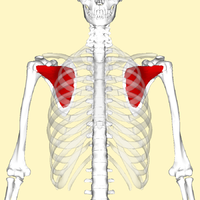
Photo from wikipedia
OBJECTIVE Research on proximal fractures in the humeral bicipital groove (BG), a region in which bones are not commonly fractured, is considered sparse in the literature. The objective of this… Click to show full abstract
OBJECTIVE Research on proximal fractures in the humeral bicipital groove (BG), a region in which bones are not commonly fractured, is considered sparse in the literature. The objective of this research was to present the definite characteristics and distribution of BG fractures. METHODS This retrospective study included and enrolled 119 proximal humeral fractures in adult patients with complete radiography data to identify the fracture distribution in the BG from January 2021 to August 2021. The bicipital region was divided into three parts, i.e. the upper 1/3, middle 1/3, and lower 1/3 of the BG, and the distribution of fracture lines was transcribed on the male or female template, as appropriate. In addition, the normal contralateral humerus was used to calculate the cortical thickness of the supratubercular groove and different parts of the BG (upper, middle, and lower parts). The Mann-Whitney test or one-way ANOVA along with LSD tests were used to determine differences in the fracture distribution and cortical thickness between men and women. RESULTS Fractures of the BG in both men and women were mainly located in the upper 2/3 region of the BG, especially in the middle 1/3 of the BG. There were significant differences in the cortical thickness of the BG in men compared with that in women. The cortical thickness was highest in the supratubercular ridge but not the BG in men and women, respectively. CONCLUSION This research concluded that bony BG fractures were always observed in the middle part of the BG and were mainly found in patients with four fractures of the proximal humerus. As a unique fracture pattern, the existence of a bony BG fracture always means that a patient has been injured by a relatively severe mechanism, and more attention should be given to these proximal humeral fractures.
Journal Title: Orthopaedic surgery
Year Published: 2022
Link to full text (if available)
Share on Social Media: Sign Up to like & get
recommendations!